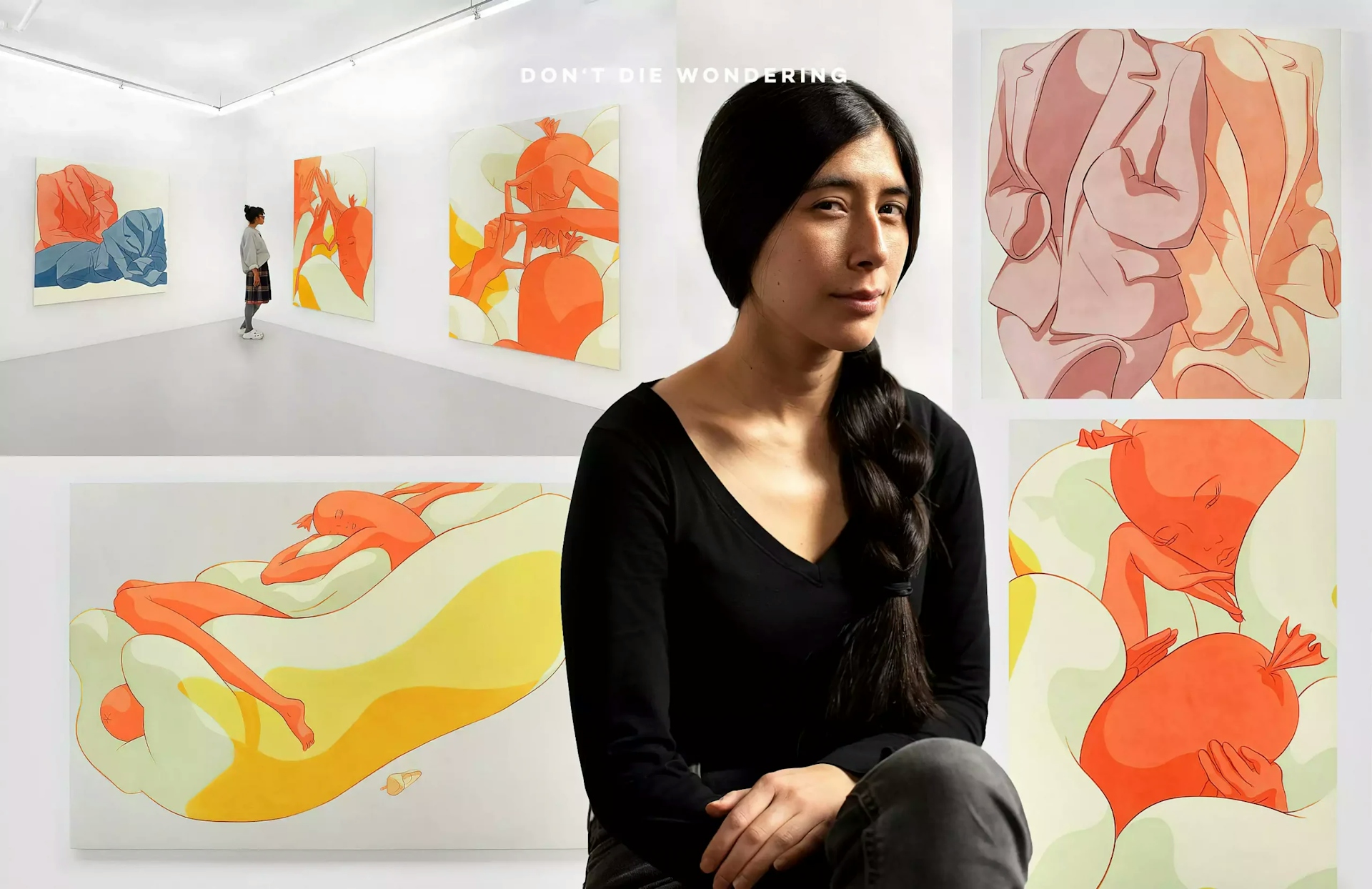Lately, Ivy Haldeman has had sold-out shows, turned-six figure sales, and has garnered interest from New York to Shanghai.
Ivy Haldeman’s surreal acrylic paintings present anthropomorphic, feminised hot dogs and clothing items, as well as close-ups of limbs in different poses. She works with a limited palette in a graphic style that places a strong emphasis on line.
“A sensual and elegant character, Haldeman’s hot dog figure is hyper-feminised,” states ArtNet. She is a tall, red-orange, long-armed, and leggy figure with high heels, pouty lips, and long lashes, conveying sultry facial expressions. She is often reclining in a relaxed fashion against a pillowy beige bun, a luxurious bed, couch, or fur coat.

Ivy Haldeman’s ‘hot dog lady’ has been a favourite topic of hers since 2016. The original inspiration for this feminised sausage was a mural of a hot dog in stilettos she saw painted on the wall of a deli in Buenos Aires in 2011.
This surreal sausage figure’s relaxed poses are inspired by Kitagawa Utamaro’s courtesans and vintage advertising, high fashion models, and Instagram starlets. Yet, there is also banal domesticity in many of her figures’ actions, such as reclining to read a book, perhaps after a long day of work – totally relatable.
Around 2018, Haldeman also began painting a series of works featuring pairs of headless pastel power suits. The suits, characterised by sharp lines and broad shoulder pads, evoke a sense of the powerful, dominant femininity created around women in business as a cultural mould from the 1980s. The power enhances this type of pose the artist puts them in. Haldeman purposefully creates tension between the two suits and their invisible occupants, juxtaposed side by side or seemingly face to face and in contrasting colours.

“I find them very relatable,” said Haldeman in an interview with W magazine.
The human gestures of her slightly bored hot dogs and empty power suits simultaneously convey lethargy and luxury but, meanwhile, grapple with issues of gender and identity in ways that now place Haldeman among the most in-demand artists of her generation.


Haldeman doesn’t think of her hot dogs, with long lashes and languid gestures; she sees them as “phallic,” says W Magazine. She covered her walls with hot dog people, “and I was like, What have I done?” she recalls, laughing. She now knows she did it because she was considering identity, a thought process that extended to the power suits.
For her, they represent interchangeable members of the workforce—of no specific race or gender—who embody capital.
Today, Haldeman’s artworks are held “in public and private collections internationally—from the Dallas Museum of Art to the Institute of Contemporary Art, Miami to Beijing’s X Museum and the Yuz Museum in Shanghai.”


